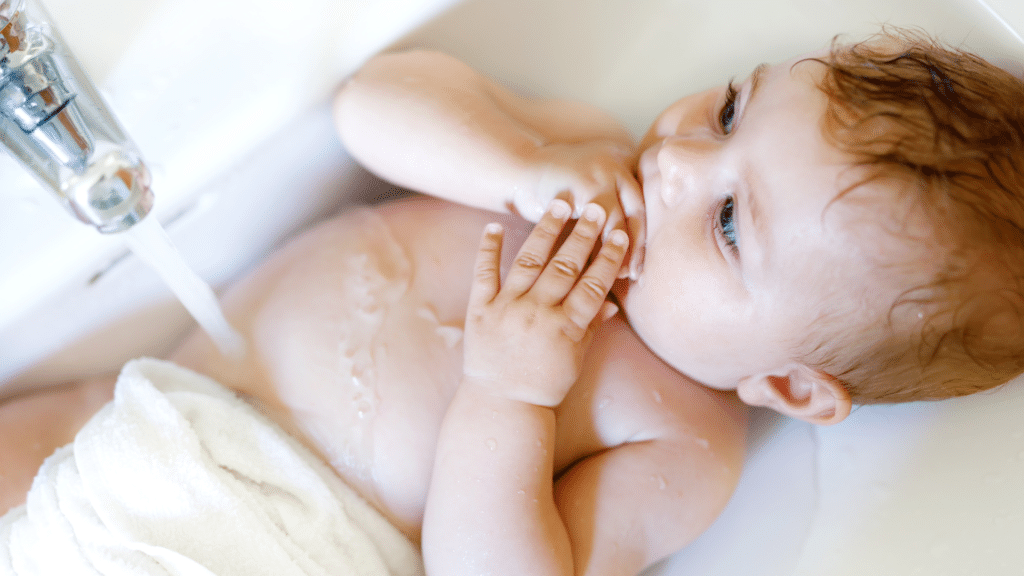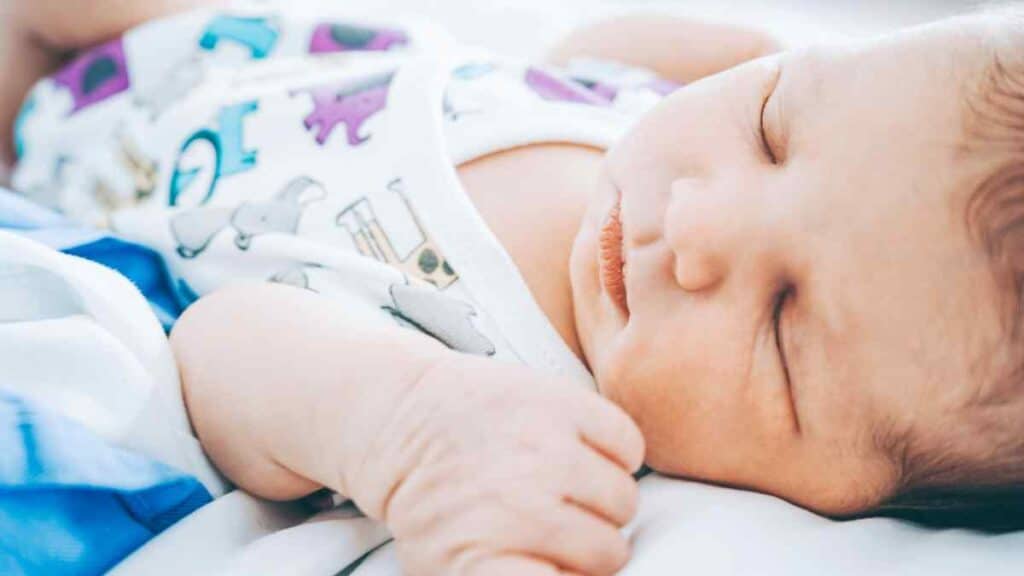Every budding parent finds themselves on the roller coaster ride of joyful moments, love, and learning coupled with frequent bouts of anxiety, particularly when concerns over their little one’s health come into play. Among these concerns, managing a baby’s first fever often seems a daunting task. It instills fear due to your baby’s perceived discomfort, linked with the degree of the fever, and the cause behind this symptom. Regardless of the myriad emotions involved, it is essential to remember that while high fever can indeed be a pointer to an underlying health issue, it also serves as an indication that the baby’s immune system is dutifully performing its function.
In this blog, we’ll walk you through understanding what a fever is, explaining its vital role in the immune response, and discussing how to identify specific symptoms that characterize a fever in babies. Additionally, we will provide a detailed guide on how to measure your baby’s temperature accurately, the appropriate time to call a doctor, and various common causes for fever in infants. By the end of this comprehensive guide, you will be well-equipped with the necessary information to handle your baby’s first fever efficiently, identify the potential causes, and take effective steps to alleviate it. Remember, knowledge and timely action are your best tools when navigating through this journey.

Understanding Fever in Babies
Managing your baby’s first fever can be less daunting if you fully grasp what fever symptoms look like in young infants. This detailed understanding empowers you to easily identify the distinguishing signs or characteristics of a fever, accurately assess your baby’s health condition, and thus, efficiently sort out the complex worries to take appropriate, focused, and timely action to provide proper care for your little one’s comfort and well-being.
What is a Fever?
A fever is an increase in body temperature, generally resulting from an illness. It serves as a signal of various health problems and is particularly frequent in young children. The body raises its temperature as a biological response to fight off viral or bacterial infections.
Fever’s Role in Immune Response
Though fevers can be alarming, they indicate that your baby’s immune system is functioning correctly. When foreign substances like bacteria or viruses enter the body, the immune system responds—raising the body’s temperature is part of this response. A higher temperature inhibits the growth of bacteria and viruses and boosts the action of white blood cells and other defense mechanisms.
It’s crucial to remember that a fever is not an illness but a symptom of another condition triggering the immune response. Despite the concern that comes with your baby experiencing fever symptoms, recognizing it’s a part of the body’s protective processes can provide some comfort. However, close monitoring of your baby’s condition and medical consultation when necessary remain essential.
Identifying Baby Fever Symptoms
Fever symptoms in babies include a higher-than-normal temperature, flushed face, lethargy, fussiness, poor sleep, reduced appetite, and unusual cries. Severe trouble breathing and a sore throat can also indicate a fever.
If your baby seems off, it’s worth checking their temperature.
Taking Baby’s Temperature
A digital thermometer is necessary, with the rectal method being the most accurate. Here’s how to measure your baby’s temperature rectally:
- Lubricate the thermometer tip with a water-soluble jelly.
- Position your baby face up and hold their ankles.
- Insert the thermometer approximately 1/2 inch into the rectum.
If rectal measurement is uncomfortable, the axillary method can be used, though it’s less precise.
When to Call a Doctor
Compare your baby’s measured temperature against the standard: 100.4°F (38°C) for rectal or 99°F (37.2°C) for axillary is considered a fever.
For babies under three months with any fever, call a doctor. For those three to six months old with a temperature up to 102°F (38.9°C) or higher and appear sick, request medical help. After six months, seek assistance if the baby seems unusually unsettled or the fever lasts more than a day.
Always consult a doctor if unsure. Remember, fevers are common in young children and often signal an infection. Being informed and calm can help manage these uncertainties.

Common Causes of Fever in Babies
While a fever indicates that something is stimulating your baby’s immune response, several different reasons may lead to the increased temperature. Recognizing these causes can help manage your baby’s fever and provide important information for your healthcare provider.
Viral Infections
Viral infections are a common source of fever in babies. Examples of these include:
- Cold and flu viruses
- Respiratory syncytial virus (RSV)
- Hand, foot, and mouth disease (caused by the Coxsackie virus)
- Roseola (caused by the human herpesvirus)
Although many viral infections can cause a low-grade fever, they generally resolve within a week. Viral infections can’t be treated with antibiotics, but managing the baby’s fever and comfort is important during this period.
Bacterial Infections
Bacterial infections also frequently cause fever in babies. Unlike viral infections, bacterial ones require antibiotics. Common examples include:
- Ear infections (otitis media)
- Pneumonia
- Urinary tract infections (UTIs)
- Bacterial gastroenteritis
If a bacterial infection is suspected as the cause of your baby’s fever, your healthcare provider will prescribe antibiotics. It’s crucial to follow the treatment plan diligently.
Vaccinations
It’s not unusual for babies to develop a mild fever post-vaccination. Vaccines work by introducing a minimal, controlled quantity of the virus or bacteria to provoke an immune response, which might momentarily induce a fever. This reaction is common and usually subsides within a couple of days.
Other Causes
Infections and vaccinations aren’t the only potential causes of fever. Other conditions and situations can lead to increased in body temperature, including:
- Overdressing: Overly warm clothing sometimes causes a mild rise in a baby’s normal temperature. Try removing some layers and monitor your baby’s temperature.
- Teething: While not a primary fever cause, teething might cause a slight rise in a baby’s temperature. Ensure your baby is comfortable and watch for any other symptoms.
- More serious conditions: In rare cases, fever can be linked to more serious illnesses. Therefore, it’s important to seek medical attention when necessary.
- Newborn fever: Fever in a newborn under 3 months old is critical and should be evaluated by a healthcare professional promptly.
Understanding the common causes of fever empowers you to make the best decisions for your little one. As always, consult your pediatric healthcare provider for any concerns about your baby’s fever or accompanying symptoms.

Home Remedies and Actions for Baby’s First Fever
When your baby experiences their first fever, it’s understandable to worry and want to comfort them. Thankfully, there are several simple home remedies and actions you can implement to keep your baby comfortable and safely lower the fever.
Age-Appropriate Fever Reducers
Over-the-counter fever reducers, such as acetaminophen (Tylenol) and ibuprofen (Advil, Motrin), can help decrease your baby’s fever and alleviate any associated discomfort. Selecting an age-appropriate medicine and faithfully following the correct dosage and frequency is crucial.
- Acetaminophen can be given to babies as young as two months old.
- For older babies, specifically after six months, ibuprofen can be used.
Always stick to the instructions on the packaging. Consult your healthcare provider if you have any questions regarding which medication to administer or the proper dosage.
Proper Dosage and Frequency
It’s vital to adhere to the appropriate dosage and frequency guidelines when administering fever reducers. Dosage is typically based on a child’s weight. Here are some general guidelines:
- Acetaminophen: Dosage spans from 10-15 mg/kg every 4-6 hours. Make sure not to exceed five doses within 24 hours.
- Ibuprofen: Dosage spans from 5-10 mg/kg every 6-8 hours.
The packaging will offer a weight-based dosage chart for reference. Utilize the provided dropper or syringe for accurate measurement.
Keeping Baby Comfortable
In addition to medication, there are other steps you can take to ensure your baby remains comfortable during a fever. Here are some ideas:
- Hydration: Encourage your baby to drink breast milk, formula, water, or oral rehydration. This helps to prevent dehydration and aids in flushing out toxins from the body.
- Cool Compresses: Apply a cool, damp cloth to your baby’s forehead or neck to provide relief and help lower their body temperature. Ensure you don’t use ice or freezing water, which could cause shivering and might increase the fever.
- Rest: Ensure your baby gets plenty of rest to help their body recover. If they have difficulty sleeping due to the fever, you can elevate their head slightly using a pillow or cushion.
- Avoid Overdressing: Dress your baby in light, breathable layers to avoid overheating. Keeping the room temperature comfortable, between 68-72°F (20-22°C), is also helpful.
And when taking your baby’s temperature rectally, it’s always a good idea to use petroleum jelly to lubricate the tip of the thermometer, making the process more comfortable for your baby.
These steps and age-appropriate fever reducers can effectively manage your baby’s fever. Feel free to consult a pediatrician if you have any concerns or if the fever doesn’t subside within a certain timeframe. Remember, if your baby is young or the fever is high, it might warrant a visit to the emergency room. When in doubt, always seek medical help.

When to Call the Doctor
Knowing when to consult your pediatrician for your baby’s fever is essential. Watch for warning signs such as difficulty breathing, dehydration, lethargy, rash, persistent vomiting or diarrhea, inconsolable crying, or other symptoms.
As a general guideline, call the doctor:
- For babies younger than three months with a fever
- For babies three to six months old with a temperature up to 102°F (38.9°C) and seems unusually irritable, lethargic, or uncomfortable, or a temperature higher than 102°F (38.9°C)
- For older children with a fever lasting more than a day, above 104°F (40°C), or if the child is getting worse
- If the fever lasts more than 72 hours or your child has a fever after being left in a hot car
Maintain open communication with your pediatrician. They’re there to help, so never hesitate to reach out if you’re concerned about your baby’s fever or symptoms.
Preventive Measures and Tips
To minimize your baby’s risk of fever and illness, consider these preventive measures:
Basic Hygiene
Proper hygiene can protect your baby from infections. Regularly wash your hands, disinfect surfaces, bathe your baby, and avoid contact with sick individuals. Also, keep your baby’s diaper area clean.
Vaccinations
Vaccinations protect your baby from several serious diseases. Follow your pediatrician’s recommended immunization schedule. Vaccines can cause mild fever, but it’s a sign your baby’s immune system is complex at work.
Strengthen Your Baby’s Immune System
Increase your baby’s immune system by breastfeeding for the first six months. As your child grows, introduce nutritious, age-appropriate foods, ensure they get enough sleep, and engage them in physical activity.
Applying these measures can help your baby stay healthy and lower the chances of fever. But remember, if fever arises, seek professional advice when necessary.

Conclusion
In conclusion, confronting your baby’s first fever can be intimidating, but as a well-prepared and informed parent, you can make this experience manageable. Understanding the nature of fevers, recognizing the symptoms, and knowing when to ring the doctor, accompanied by suitable home remedies, can give you the confidence to cope with this essential aspect of infant care. Trust your instincts as a parent, and never hesitate to contact your pediatrician with any concerns. One of the first steps to confidently managing a baby’s fever is understanding the normal range for their temperature.
For babies, a rectal temperature provides the most accurate reading and anything above 100.4°F (38°C) generally indicates a fever. Furthermore, measures for prevention can greatly reduce your child’s susceptibility to fever and other illnesses. In maintaining proper hygiene, adhering to the vaccination schedule, and fostering a strong immune system, you can help keep your baby healthy. Although fevers can invoke worry for you and discomfort for your child, they are a typical part of your baby’s immune response. Armed with accurate knowledge and resources, you will be able to effectively navigate these situations, ensuring your child’s comfort and safety.
Did this article answer your question? Please comment down below. If you have any further questions, don’t hesitate to ask.



